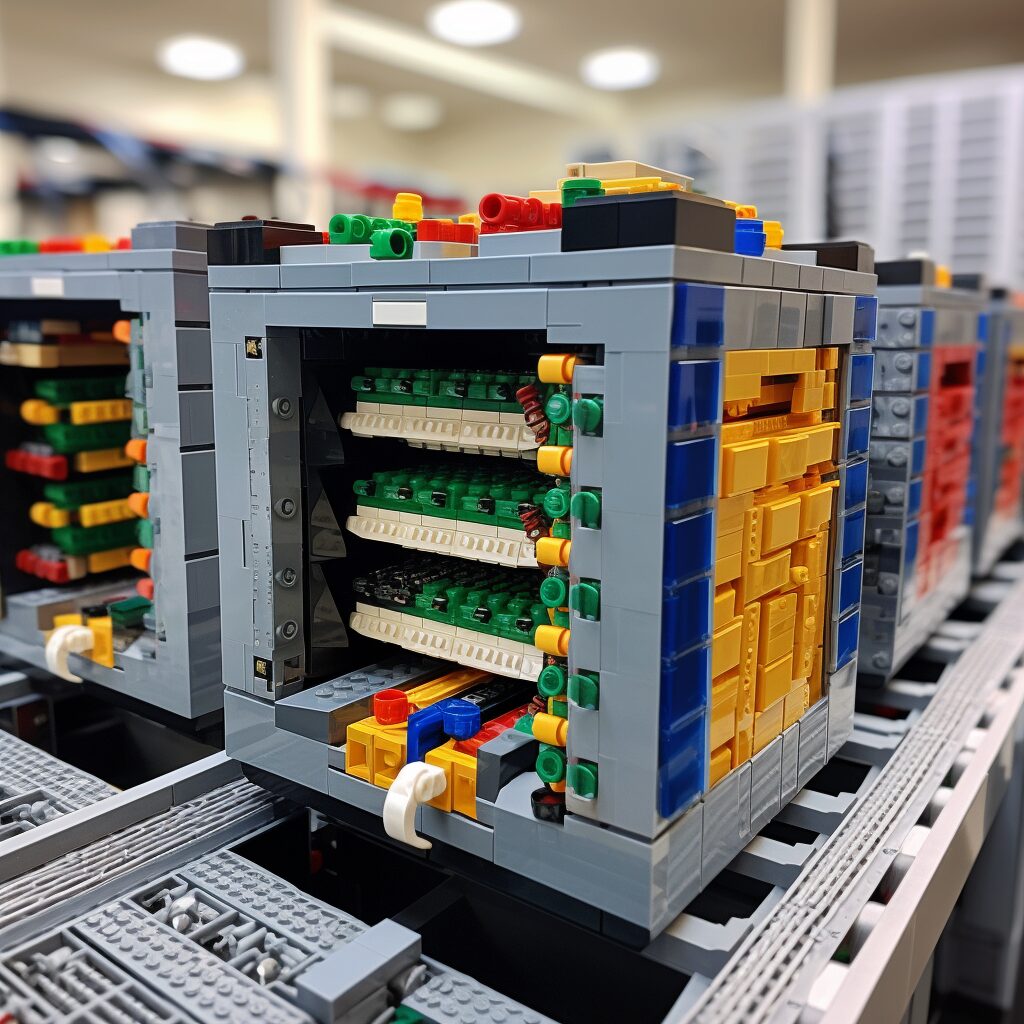Scala, a blend of scalable and language, has surged in popularity over the years due to its functional programming capabilities and strong static typing. As more companies are leaning towards using Scala for their backend development and data processing, there's a growing demand for skilled Scala developers. If you're prepping for a Scala interview soon, then this article will cover some core Scala interview questions to help you out.
Key Scala Interview Questions to Master
- What is Scala?
- How does Scala differ from Java?
- Explain the difference between val and var in Scala.
- What are Case Classes?
- What is the significance of an object in Scala?
- How does Pattern Matching work in Scala?
- Explain Scala's Option, Some, and None.
- How are Traits different from Interfaces in Java?
- What are Higher-Order Functions in Scala?
- How is Lazy Evaluation achieved in Scala?
- What is a Monad in Scala?
- How are Implicit Parameters different from Default Parameters?
- What is Currying in Scala?
- What's the difference between flatMap and map in Scala?
- How does for-comprehension work in Scala?
- What is Tail Recursion? Why is it important?
- Describe Future in Scala.
- What is an Extractor in Scala?
- What is the difference between a class and an object in Scala?
- How does the apply method work in Scala?
- What are by-name parameters in Scala?
- Explain the use of _ wildcard in Scala.
- What are sealed classes in Scala?
- How do implicit classes help in Scala?
- What is Type Bounds in Scala?
- How does Self-types work in Scala?
- What's the difference between foldLeft and foldRight in Scala?
- How are Tuples used in Scala?
Comprehensive Answers to Essential Scala Interview Questions
1. What is Scala?
Scala is a high-level, modern programming language that combines object-oriented and functional programming paradigms. Developed by Martin Odersky, it's designed to be concise, elegant, and expressive while also ensuring type safety and scalability.
2. How does Scala differ from Java?
Some of the key differences include:
- Functional Programming: While Java has introduced functional programming features in recent versions, Scala was built with this paradigm in mind from the start.
- Immutable Collections: Scala promotes immutability, especially with its collection library.
- Type Inference: Scala's compiler can deduce types of values and variables, reducing boilerplate code.
- Case Classes and Pattern Matching: Scala provides an expressive way to handle data structures and decomposition.
3. Explain the difference between val and var in Scala.
In Scala, val is used to declare a constant, which means once it's initialized, its value cannot change. On the other
hand, var denotes a mutable variable, meaning its value can change throughout its lifetime.
4. What are Case Classes?
Case classes are a concise way to define classes in Scala. They automatically provide implementations for standard
methods like toString, equals, and hashCode. They are immutable by default and are often used for pattern
matching.
5. What is the significance of an object in Scala?
In Scala, an object is a singleton instance. It's often used to provide utility methods or to define companion objects for classes, which can contain factory methods or other static methods related to the associated class.
6. How does Pattern Matching work in Scala?
Pattern matching is a mechanism in Scala where a value can be compared against a pattern. Depending on the match's success, some computation can be executed. It's like a switch-case in Java but much more powerful, allowing for deep matches, guards, and more.
7. Explain Scala's Option, Some, and None.
Option is a container type that represents an optional value. It has two subclasses: Some and None. Some holds a
value, while None represents a lack of value. It's a safer alternative to nulls in Java.
8. How are Traits different from Interfaces in Java?
Traits in Scala are similar to interfaces in Java, but they can also contain concrete methods and variables. This allows developers to mix multiple traits into a class, providing a flexible way to share code across different classes.
9. What are Higher-Order Functions in Scala?
Higher-Order Functions (HOF) are functions that take one or more functions as parameters and/or return a function as
a result. In Scala, thanks to its functional nature, HOFs are prevalent. Examples include the map, filter, and
reduce functions on collections.
10. How is Lazy Evaluation achieved in Scala?
Scala achieves lazy evaluation using the lazy keyword. When a variable is declared as lazy, its initialization is
deferred until it's accessed for the first time.
11. What is a Monad in Scala?
In functional programming, a Monad is a design pattern used to handle program-wide concerns, such as state or IO, in
a pure functional way. In Scala, Option, Future, and List are examples of monadic types. Monads must satisfy the
three monadic laws: left identity, right identity, and associativity.
12. How are Implicit Parameters different from Default Parameters?
- Default Parameters: These allow you to set default values for function parameters. If the caller does not provide a value for this parameter, the default value is used.
- Implicit Parameters: Functions with implicit parameters can be invoked without explicitly providing values for these parameters. Instead, the values are taken from the current scope if they are marked as implicit.
13. What is Currying in Scala?
Currying is a technique where a function that takes multiple arguments is transformed into a series of functions that each take a single argument. In Scala, you can define curried functions using multiple parameter lists.
14. What's the difference between flatMap and map in Scala?
Both flatMap and map are used to transform elements in a collection. The key difference is:
map- transforms each element of the collection and results in a collection of the same size, with the transformed type.flatMap- transforms each element into a collection and then flattens the results into a single collection.
15. How does for-comprehension work in Scala?
for-comprehension is syntactic sugar in Scala, used for composing operations on monadic types (like Option, List,
Future). Under the hood, it translates to calls to methods like map, flatMap, and filter.
16. What is Tail Recursion? Why is it important?
Tail recursion is a form of recursion where the recursive call is the last operation in the function. It's crucial because the Scala compiler can optimize tail-recursive methods to iterative ones, preventing potential stack overflow errors.
17. Describe Future in Scala.
Future is a monadic construct that represents a value that might not yet be available. It is used for non-blocking,
asynchronous operations. When an operation is performed on a Future, it schedules a callback instead of blocking the
current thread.
18. What is an Extractor in Scala?
An extractor in Scala is an object that has an unapply method. It's used in pattern matching to destructure objects.
When you pattern match against an extractor, the unapply method is called to see if it matches and potentially
extract values.
19. What is the difference between a class and an object in Scala?
A class in Scala is a blueprint for creating objects (instances) and can take parameters. An object, on the other hand, defines a single instance of a class and cannot take parameters. It's essentially a singleton and often used for utility functions or as companion objects to classes.
20. How does the apply method work in Scala?
The apply method is a special method in Scala. When an object is called as if it were a function, the apply method of
that object is invoked. This method is often used in companion objects to create instances of the associated class
without using the new keyword.
21. What are by-name parameters in Scala?
by-name parameters in Scala are not evaluated at the time of function call but instead are evaluated every time they
are accessed within the function. They are defined using => before their type.
22. Explain the use of _ wildcard in Scala.
The _ wildcard in Scala is versatile and its meaning depends on the context. Some common uses include:
- As a placeholder for one or more elements (like in pattern matching or lambda functions).
- To import everything from a package.
- To represent unused variables or parameters.
23. What are sealed classes in Scala?
sealed classes are used to restrict class hierarchy. When a class is declared sealed, it can only be extended within
the same file. This is useful, especially in pattern matching, to ensure all possible cases are considered.
24. How do implicit classes help in Scala?
implicit classes allow developers to add new methods to existing types without altering them. When the compiler encounters a method that doesn't exist on a type, it searches for an implicit class that can wrap the type and provide the method.
25. What is Type Bounds in Scala?
Type bounds limit the type parameters to a certain range. Scala supports:
- Upper Type Bounds (using
<:) which implies the type must be a subtype of another. - Lower Type Bounds (using
>:) which means the type must be a supertype of another.
26. How does Self-types work in Scala?
Self-types are a way to declare that a trait must be mixed into another trait or class, even though it doesn't directly extend it. It's a way to ensure that a particular trait is mixed in before the current trait can be used.
27. What's the difference between foldLeft and foldRight in Scala?
Both foldLeft and foldRight are methods to fold (or reduce) a collection from one side to another, applying a binary
operator. The difference lies in the direction:
foldLeftstarts from the leftmost (head) element and moves to the right.foldRightstarts from the rightmost (end) element and moves to the left.
28. How are Tuples used in Scala?
A Tuple is a collection of items of possibly different types. Tuples are immutable and can hold a fixed number of elements (from 1 to 22). They are useful for returning multiple values from a function without needing to define a specific case class.
Conclusion
Scala is an exciting blend of functional and object-oriented programming, and understanding its core concepts is vital to perform well in an interview. We've just scratched the surface here, so continue to explore, practice, and deep-dive into each topic to confidently answer any Scala interview question that comes your way.




